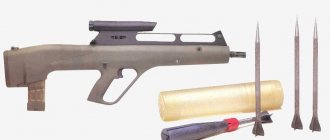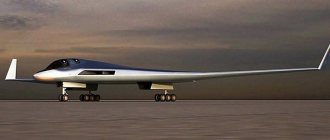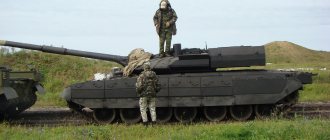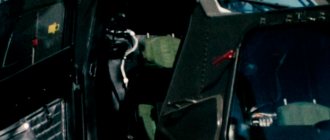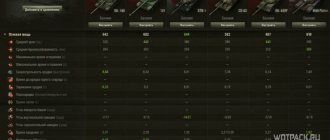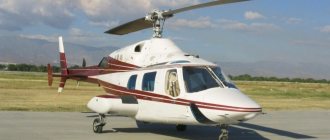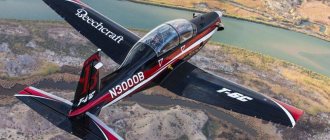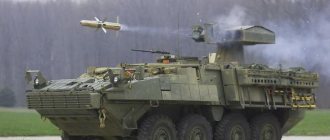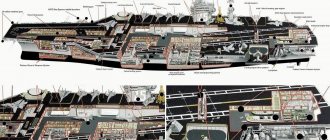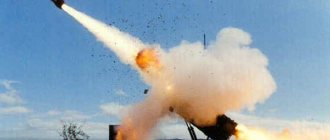The United States is believed to have the world's most powerful unmanned aerial fleet. It contains more than 11 thousand units capable of performing a variety of combat missions. Let's take a closer look at American drones. Fortunately, CI Geography has prepared a detailed infographic on this topic.
First, let's note that all major branches of the US Armed Forces use flying drones - not just the US Air Force, but also the US Navy and US Army.
The most active user of military UAVs is the US Air Force.
UAV in the US Air Force
Intelligence and surveillance
The 12th Reconnaissance Squadron (ACC) is equipped with 8 RQ-4B Global Hawk UAVs.
It is an unmanned surveillance aircraft developed by Northrop Grumman. Radar with a synthesized radiation pattern, various long-range electro-optical and IR sensors. It can make observations over an area of up to 100 thousand square meters per day. km. They have been flying since 1998. In total, about 43 such UAVs were built. Price ranges from $61 to $223 million, depending on the year of construction and modification. It is said that it is cheaper to fly a U-2S aircraft with a pilot on board than a Global Hawk. These devices are no longer in production, they were replaced by the MQ-4C Triton. But for now they are serving.
The 13th Reconnaissance Squadron (AFRC) is equipped with 10 RQ-4B Global Hawk UAVs.
The 348th Reconnaissance Squadron (ACC) is equipped with 7 RQ-4B Global Hawk UAVs.
The 1st Reconnaissance Squadron (ACC) is equipped with the 5th TU-2S Dragon Lady; 5th RQ-4B Global Hawk UAV and 11th T-38A Combat Talon.
With Global Hawk everything is clear. But two other aircraft raise questions for me.
The TU-2S is one of the many modifications of the legendary U-2A high-altitude reconnaissance aircraft, which was shot down by a missile over Soviet territory back in 1960. Much water has passed under the bridge since then. The TU-2S is equipped with a powerful GE F118 turbofan engine. The literature describes the TU-2S as a training variant of the U-2S with two seats (pilot and trainer). It is not clear why these vehicles were included in the picture dedicated to drones.
The same applies to the T-38A Combat Talon - this is a mass-produced training two-seat supersonic aircraft (more than a thousand copies were produced). Has it been converted into a UAV or are there any other reasons to mention it as part of the 1st Squadron?
The 18th Reconnaissance Squadron (ACC) is equipped with a dozen MQ-1B Predator UAVs manufactured by General Atomics, USA.
This is a medium-altitude remote-controlled UAV, aircraft type, originally reconnaissance (RQ-1), later modified to multi-purpose (MQ-1). 1B is one of many modifications of the MQ-1. Produced as part of a complex - 4 UAVs + ground control station. A popular model in the world, purchased from the USA. In production for over 11 years, over 150 MQ-1Bs have been produced. Can be equipped with a variety of air-to-ground or air-to-air missiles. The drone is not equipped with Stealth technology, and therefore is not intended for combat operations against countries where air defense and air forces are absent or outdated. A further development of the MQ-1B was the MQ-9 Reaper UAV, which was significantly more advanced. So the Predators are more likely to finish their war.
The 6th Reconnaissance Squadron (ACC) is equipped with 14 MQ-1B Predator UAVs manufactured by General Atomics, USA.
The 11th Reconnaissance Squadron (ACC) is equipped with the 10th MQ-1B Predator UAV manufactured by General Atomics, USA.
The 15th Reconnaissance Squadron (ACC) is equipped with the 15th MQ-1B Predator UAV manufactured by General Atomics, USA.
The 17th Reconnaissance Squadron (ACC) is equipped with the 12th MQ-1B Predator UAV manufactured by General Atomics, USA.
The 78th Reconnaissance Squadron (AFRC) is equipped with 12 MQ-1B Predator UAVs and 12 MQ-9A Reaper UAVs manufactured by General Atomics, USA.
The MQ-9A Reaper is a multi-mission, extended-range UAV. This UAV has been in use since 2007 and today is one of the most popular US military drones. Can remain in the air at high altitudes for up to 14 hours continuously. Control is from a ground-based container control point. Can be armed with 4 Hellfire missiles or others. As of August 2015, there were 104 such UAVs in operation. It's funny, but the US military began hiring civilian pilots to fly reconnaissance/surveillance UAVs in 2015.
The 111th Reconnaissance Squadron (ANG) is equipped with 4 MQ-1B Predator UAVs and 3 RC-26B Metroliner
Originally a civil transport twin-propeller Fairchild Air aircraft. Used by the US Air National Guard. I haven’t heard about converting it into a UAV.
The 178th Reconnaissance Squadron (ACC) is equipped with 12 MQ-1B Predator UAVs manufactured by General Atomics, USA.
The 196th Reconnaissance Squadron (ACC) is equipped with the 9th MQ-1B Predator UAV manufactured by General Atomics, USA.
The 214th Reconnaissance Squadron (ACC) is equipped with 12 MQ-1B Predator UAVs manufactured by General Atomics, USA.
The 343rd Reconnaissance Squadron (ACC) is equipped with 12 MQ-1B Predator UAVs manufactured by General Atomics, USA.
The 30th Reconnaissance Squadron (ACC) is equipped with the 20th RQ-170A Sentinel UAV manufactured by Lockheed Martin, USA.
A very interesting machine - a multi-purpose remote-controlled uninhabited aircraft of the “flying wing” type using “stealth” technology. Used by the US Air Force and CIA since 2007. Wingspan - 20 meters, length - 4.5 m.
Electronic warfare squadrons
The 430th Electronic Warfare Squadron (USAFCENT) is equipped with 3 RQ-4B Global Hawk UAVs and 4 E-11A BACN.
The E-11A Global Express is a modification of the Bombardier Global Express Aircraft, equipped with a BACN communications system that allows for various types of communications and Internet connectivity for US Army ground units or other military units, part of a tactical data communications system. Acts as a repeater to provide communications in hard-to-reach areas. There is no evidence that this is a UAV.
Special Operations Squadrons
The 2nd Special Operations Squadron (AFRC) is equipped with 12 MQ-9A Reapers manufactured by General Atomics, USA.
The 3rd Special Operations Squadron (AFSOC) is equipped with 12 MQ-1B Predators and 12 MQ-9A Reapers produced by General Atomics, USA.
The 33rd Special Operations Squadron (AFSOC) is equipped with 12 MQ-9A Reapers manufactured by General Atomics, USA.
Strike squadrons
Attack Squadron 9 (ACC) is equipped with 24 MQ-9A Reapers manufactured by General Atomics, USA.
The 19th Attack Squadron (ACC) is equipped with 12 MQ-9A Reapers manufactured by General Atomics, USA.
The 29th Attack Squadron (ACC) is equipped with 24 MQ-9A Reapers manufactured by General Atomics, USA.
The 42nd Attack Squadron (ACC) is equipped with 18 MQ-9A Reapers manufactured by General Atomics, USA.
The 91st Attack Squadron (AFRC) is equipped with 12 MQ-9A Reapers manufactured by General Atomics, USA.
The 138th Attack Squadron (ANG) is equipped with 12 MQ-9A Reapers manufactured by General Atomics, USA.
The 429th Attack Squadron (ANG) is equipped with 12 MQ-9A Reapers manufactured by General Atomics, USA.
The 432nd Attack Squadron (ANG) is equipped with 12 MQ-9A Reapers manufactured by General Atomics, USA.
The 78th Attack Squadron (AFRC) is equipped with 12 MQ-1B Predators manufactured by General Atomics, USA.
What is the DARC system?
DARC - Distributed Autonomy Responsive Control (literally - “distributed feedback control”). This system provides superior artificial intelligence and human interaction in decision-making for the management of manned or unmanned fleets in conditions of high concentration of aircraft. With DARC, operators can monitor large numbers of aircraft and UAVs simultaneously at high speed and during maneuvers. The technology ensures smooth interaction between people and artificial intelligence for the successful implementation of missions assigned to manned and unmanned objects.
The above goals highlight the power of human-machine integration, which will enable faster and more effective decision making in complex and dynamic environments in the future.
Northrop Grumman, like many other defense contractors, produces a variety of smart systems. The company wants to ensure that they work together and autonomously, with minimal human control. During testing at the company's Innovation Solutions Center in McLean, manned and unmanned vehicles flew over a simulated area and performed various test missions. The planes could simultaneously communicate with each other and with the base. Once the goal of one of the missions was established, the systems offered options for its implementation. For example, a device that was far away or did not have enough fuel to complete the mission was automatically excluded from the list of performers, and if the plane, while moving towards the target, detected a radar station on its way, then it automatically warned the base and all other participants in the mission about this .
Northrop Grumman is committed to an unlimited number of aircraft and other types of military equipment that can be integrated into DARC on joint missions.
The company has already conducted test simulations involving up to 100 units of various types of equipment and systems, and in real tests it was able to use 10 simultaneously. Neither the number nor the type of equipment should matter. The system will be able to use almost anything that could theoretically interact with each other.
US Army Air Units and UAVs
440 RQ-7 Shadow UAVs in platoons.
RQ-7 Shadow, AAI Corp., USA. Reconnaissance UAV. It is in service with the US Army, as well as a number of other countries, including Australia and Sweden. More than 500 examples were built. About $0.75 million for the device, about $15.5 million for the system. In service since 2002. There are modifications 200, 400, 600. Wiki.
Battalion reconnaissance units: 24 AH-64D helicopters and 12 RQ-7B Shadow UAVs.
UAV control centers have begun to be installed on AH-64D Apache Block III helicopters.
Military intelligence battalions
The 1st Military Intelligence Company "Informare Laboramus" is equipped with 5 RC-12K/X Guardrail and 2 RQ-tB Shadow
The twin-engine C-12 Huron (in civilian use is the King Air 200) is equipped with an intelligence collection system and is called the RC-12R/X Guardrail.
The 15th Military Intelligence Company "Nighthawks" is equipped with 5 RC-5A/B Guardrail and 4 RC-12N Guardrail UAVs
The 224th Military Intelligence Battalion is equipped with 6 MC-12S/W Liberty and 6 MC-12N/X Guardrail, as well as 1 U-27A Caravan and 3 M/RQ-5A/B Hunter.
The 312th Military Intelligence Company Semper Veritas is equipped with 3 RQ-7B Shadows.
MQ-1C Gray Eagle based units
160th SOAR(A) - E/160 - Fort Campbell, KY - 12 MQ-1C Gray Eagle, General Atomics, USA
Multi-purpose remote-controlled aircraft-type UAV. The cost is about $21 million per unit. Can carry air-to-surface missiles.
1st Cavalry Division - F/227-101 - Fort Hood, TX - 9 MQ-1C Gray Eagle, General Atomics, USA
1916th Support Battalion - B/2-229 - Fort Irwin, CA - 9 MQ-1C Gray Eagle, General Atomics, USA
101st CAB - B/101 - Fort Campbell, KY - 9 MQ-1C Gray Eagle, General Atomics, USA
1st Cavalry Division - F/227-1 - Fort Hood, TX - 9 MQ-1C Gray Eagle, General Atomics, USA
1st Infantry Division - F/1-1 - Fort Riley, KS - 9 MQ-1C Gray Eagle, General Atomics, USA
10th Mountain Division - D/10-10 - Fort Drum, NY - 9 MQ-1C Gray Eagle, General Atomics, USA
USA ACE RPA Batallion
1st Air Brigade - 2-13 Fast and Deadly USAACE - 2 MQ-1C Gray Eagle, 2 MQ-1B Predator; 5 RQ-7B Shadow; 5 RQ-5A/B Hunter; 5 I-GNAT ER
Glider
The RQ-4 is made according to a normal aerodynamic design. The wing consists of a composite material, which is built on the basis of carbon fiber. The V-shaped tail consists of composite materials. The fuselage is a semi-monocoque and consists of aluminum alloys. The length is 13.3 m, the wingspan is 35 m, and the take-off weight is approximately 15 tons.
US Navy and UAVs
Platoon of light anti-submarine helicopters (HSL-60 Jaguars) - 4 SH-60B Seahawk and 3 MQ-8B Firescout.
The MQ-8B Firescout is a naval unmanned remote-controlled helicopter. Can operate up to 115 miles away. First flight 10/31/2013. Equipped with radar, sensors for intercepting communications and APKWS (high precision fire) system, which means laser-guided missiles.
Naval helicopter strike platoons (HSM-35 Magicians) - 8 SH-60B Seahawk and 2 MQ-8B Firescout.
Advantages and disadvantages of the MQ-9 Reaper UAV
Both the pros and cons of the Reaper are largely related to its increased size compared to the Predator. The sharply increased carrying capacity has made the drone a much more powerful weapon. Thanks to a large arsenal of guided missiles, the MQ-9 can be used not only to carry out a single precision strike, like the MQ-1 Predator, but also to successfully provide direct support to troops on the battlefield, replacing attack helicopters and attack aircraft.
In addition, the Reaper is capable of taking on board a variety of additional equipment, which opens up the possibility of its use in a variety of areas. Already today, the MQ-9 is used to control vast areas of water, prevent smuggling, monitor order on city streets during public events, and also to detect forest fires.
IKhana is a special variant of the MQ-9 transferred to NASA. Used to search for forest fires.
On the other hand, the increase in the size of the UAV has made it more visible and vulnerable. This shortcoming was especially evident in Yemen, where two such drones were shot down by some kind of homemade missiles.
Other shortcomings of the Reaper include its relatively low level of automation. Takeoff and landing still have to be done manually. However, this disadvantage will probably be eliminated in the near future.
ISIS
defenseone.com Phantom Quadcopter (IG)
It is important to note that in Syria, militants of terrorist groups for the first time massively used a variety of homemade and converted civilian drones into combat drones. Such a technological approach has become a new word in guerrilla operations against an enemy with superior qualitatively and sometimes quantitatively superior forces.
Militants used drones to perform reconnaissance functions, as well as to carry out targeted strikes on targets belonging to the United States, Syria, and Russia, both military and civilian. Often, this involved video filming, which was later posted on social networks for propaganda purposes.
Among the aircraft-type UAVs used by ISIS, the most notable in the Syrian theater of operations were the small-sized Skywalker X8 UAV developed by the Chinese company Guilin Feiyu Electronic Technology, one of which was picked up by Kurdish forces in November 2016 near the city of Manbij located in northern Syria, and the X-UAV Talon UAV of the Chinese HOOAH Aviation Technology Co., Ltd., which was, in particular, spotted in the Aleppo area in 2015.
However, the most widely used UAV by terrorist groups in Syria was, perhaps, the Phantom unmanned quadcopter from the Chinese company DJI, modified to carry factory-made or home-made munitions.
The most striking examples of the use of UAVs by terrorists include the destruction in October 2022 of an ammunition depot of the Syrian Arab Army located in the province of Deir ez-Zor, as well as an attack on the Russian Khmeimim airbase and the logistics center of the Russian Navy in the city of Tartus in January 2022
In the latter case, 13 self-made disposable vehicles with a range of about 100 km tried to carry out a strike simultaneously using GPS satellite coordinates, which was the first case of mass use of homemade UAVs. Of these 13 UAVs, as reported, 7 vehicles were destroyed by standard Pantsir-S anti-aircraft gun systems of Russian air defense units, 6 small air targets were neutralized by electronic warfare.
Syria
army-news.ru Tu-143 (VR-3 “Flight”)
The interests pursued by the official authorities of Syria in this conflict are obvious - preserving the territorial integrity of the country, its government institutions, protection from external and internal opponents. At the same time, the possibilities, including technical ones, for achieving these goals were quite limited.
As for the UAVs, it is known that the Syrian Armed Forces previously possessed similar systems. In particular, according to some reports, Syria had Soviet air reconnaissance systems "Flight"[1]. Today these systems are already outdated. However, they may be in service in some quantities in Syria.
Of the other UAVs, whose development was carried out during the existence of the USSR, the Bee devices were seen in the skies of Syria. It is not known whether the UAV data belonged to the Russian military department or was transferred to the Syrian side.
Some speculation has taken place regarding the possibility of the Syrian military operating Russian Eleron-3SV UAVs (development). This is a portable system with small, short-range UAVs. The presence of such a drone in the Syrian theater of operations became known in the summer of 2015 after the discovery of a fallen aircraft in a zone controlled by militants of anti-government forces in the summer of 2015 was made public.
Some sources indicate that the Syrian military and a number of Iranian reconnaissance UAVs of the Ababil and Mohajer tactical class may have different versions[2]. In particular, there were several reports of the appearance of the Mohajer-2 UAV in the skies of Syria. However, the images available are of low quality and the device cannot be clearly identified from them.
